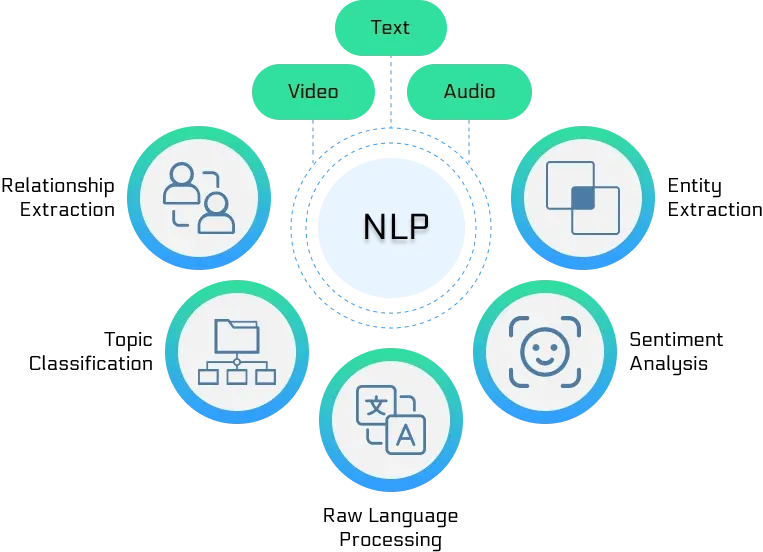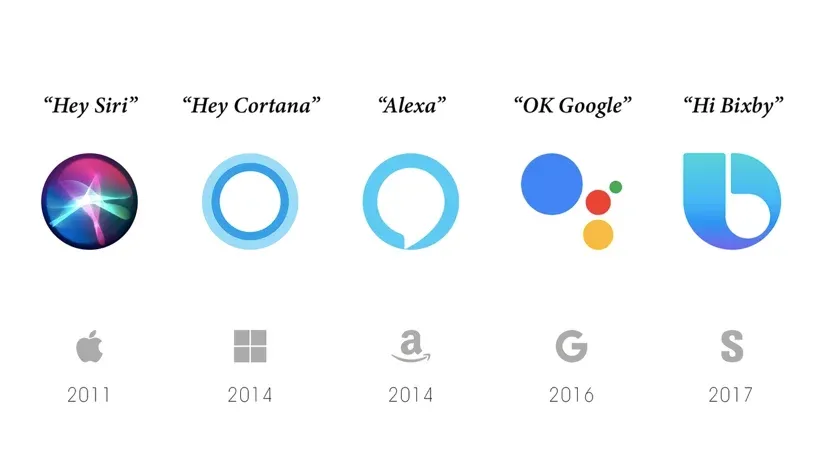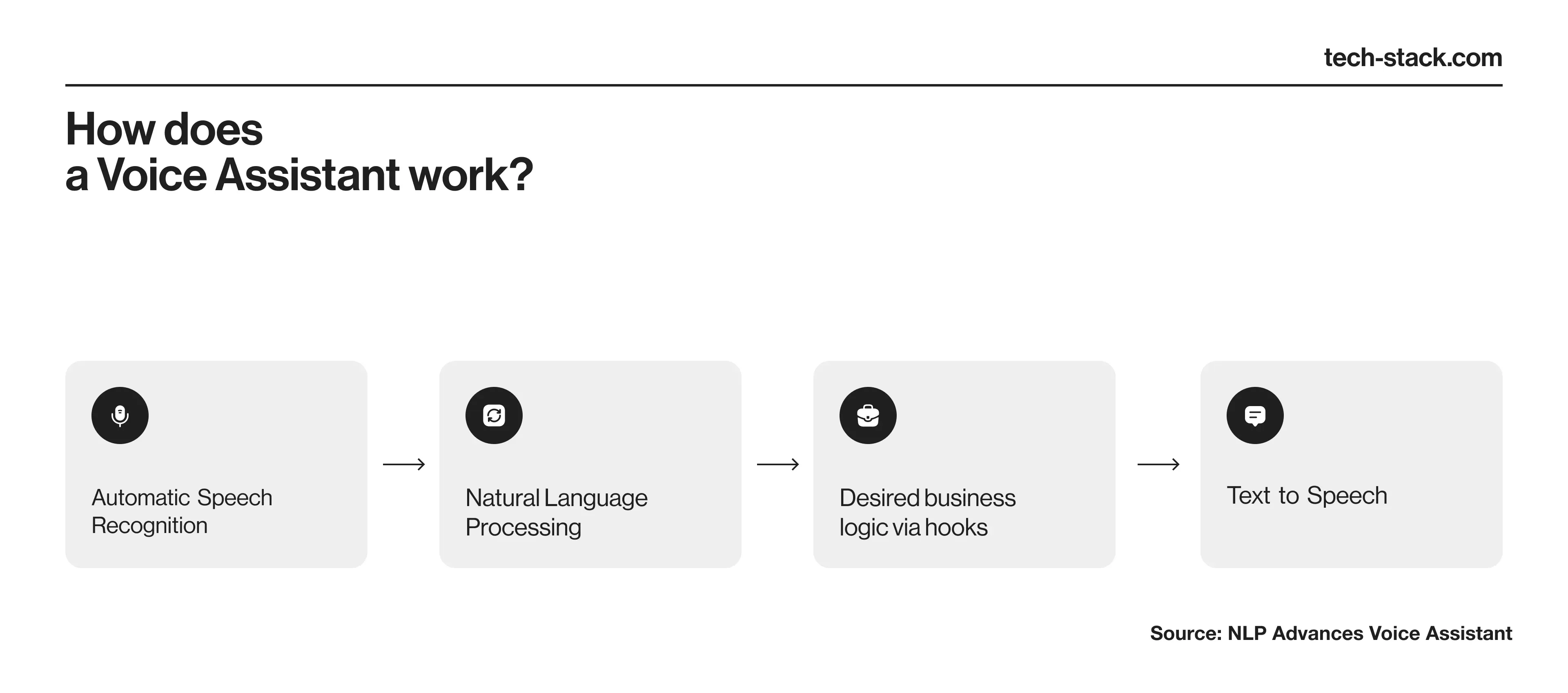Have you ever stopped to consider the marvel that is your friendly voice assistant? One moment it's your personal DJ, another it's answering questions with a quick online scan, or arranging your calendar.
All you need to do is ask!
This magic runs on Natural Language Processing (NLP). In a nutshell, it's what allows machines to understand and respond to us humans with our complex languages and expressions.
But how did we get here? And where are we headed next?
It's a captivating tale, full of advancements, surprises, and potential.
As you navigate through this guide, prepare to dive deeper and be amazed as you explore the dynamic evolution of NLP and voice assistants, the hurdles they face, and the revolutions they promise in our world.
Natural Language Processing (NLP)
Natural Language Processing (NLP) is a big puzzle-solving game that technology plays with the human language. Think of when you ask Siri to play your favorite song, or when Alexa gives you the weather forecast. That's NLP at work.
In simpler terms, NLP helps machines read, understand, and respond to human speech. The goal is to make communication between us and machines both easy and natural.
Now, how does NLP work? It plays around with two big ideas:
First is understanding the human language. This is quite a task, as language is full of slang, idioms, and often does not follow rules strictly. So, machines need to get the hang of this complexity.
This understanding step is all about turning this human text into a clear message that a machine can understand.
Second is the response part. Once the machine fully grasps the input, it has to come up with a sensible answer. If you ask your voice assistant, "What's the weather like?", it should come back saying something like, "It's sunny and 75 degrees outside."

Seeing it in action can be in everyday stuff. It’s there when email filters categorize messages as spam or relevant. It’s in the auto-prompt suggestions when you’re typing a search query. It's also in those handy real-time translations during a foreign language chat.
The exciting bit to note is that NLP is not a future thing. It’s here, right now. It's bridging the gap between human language and technology comprehension. As you interact with your voice assistants or other automated systems, you're already part of this quickly evolving technology.
In short, NLP takes away the robot-like feel while interacting with machines. It's influencing the realm of artificial intelligence, making our techy aides more like helpful, understanding friends.
But it's growth is far from over. As NLP develops, picture more smart and interactive gadgets morphing how we live, learn, and even relate with each other.
Voice Assistants
Voice assistants are like digital helpers. They talk with you, listen to you, and get stuff done for you. These assistants are powered by voice commands, so all you need to do is say what you want, and voila! It’s done.
Now, you’ve probably used a voice assistant before. They live in your phones, computers, and even in those small smart speakers sitting on your side table. You're likely familiar with Siri from Apple, Alexa from Amazon or the Google Assistant from, well, Google!
Here's what makes voice assistants interesting. They're designed to understand and talk in a natural human style. And that's possible thanks to our earlier topic, Natural Language Processing (NLP). Voice assistants listen to your words, work out what you mean, and then act or respond accordingly.
Let's take an average day as an example. You might ask your voice assistant to wake you up at 7 AM, read out the top news headlines, tell you the weather, or play your workout playlist. When you're cooking, you might ask it to set a timer or read out a recipe. In essence, it's all about helping you sail smoothly through your daily tasks.
A few particular voice assistants stand out:
Siri, the one living in your Apple devices, is quite helpful. Ask Siri to send a text, make a call, or open an app, and it gets done. Need to find a restaurant nearby? Siri can do that.
Google Assistant is pretty smart too. Apart from regular tasks, Google Assistant can translate your speech into another language in real-time or control smart devices in your home.
And then there’s Alexa, Amazon's assistant. Alexa shines at home automation. You can ask it to turn off the lights, adjust your thermostat, or even lock your doors.
However, voice assistants aren't just about setting alarms or playing your favourite tunes. They’re changing the way we interact with technology. They’re simplifying life, one voice command at a time.

As they grow more advanced, who knows the tasks they'll be able to take on? Remember, while technology is advancing, it's always about how it's making our lives better.
The Evolution of NLP and Voice Assistants
Soon, we arm ourselves with the lens of time to look back, observe the present, and envision the future of NLP and voice assistants.
Let's dive in and explore their dynamic journey and see where it might lead.
Suggested Reading:The Future of Automation: NLP and Voice Assistants
The Past: Humble Beginnings
Once, NLP and voice assistants were just theoretical concepts. Early attempts at text-based communication and voice recognition may seem primitive now, but they were the seeds for today's ever-evolving landscape.
Siri's introduction by Apple in 2011 was a significant turning point, making voice assistants a common household phrase.
The Present: Everyday Sidekicks
Fast forward to now, and we see that NLP and voice assistants have become our daily companions.
From Siri to Google Assistant, to Alexa, these intelligent entities make our lives easier with tasks as simple as creating a shopping list or as complex as performing web research.
They're prevalent not only in smartphones but also in smart homes, cars, and wearable devices.
The Future: Uncharted Horizons
When we look forward to the potential developments, the possibilities seem truly endless. We anticipate a future where voice assistants will engage in more impactful and interactive conversations.
As technology advances, we might witness NLP and voice assistants being integrated into more than just phones and speakers. They could reshape job markets by creating new roles and opportunities.
Potentially, these technologies might lead to a more inclusive and accessible world, where anyone, regardless of their abilities, can enjoy a simplified and smart lifestyle.
In conclusion, the journey of NLP and voice assistants has been an exhilarating one, filled with remarkable milestones. The future holds immense potential, and it's fascinating to speculate about the developments we might see in the coming years.
Suggested Reading:The Future of Automation: NLP and Voice Assistants
Challenges and Limitations
As amazing as NLP and voice assistants can be, they're not perfect. They come with a handful of challenges and limitations. Understanding these can help us appreciate their progress and how far they still need to go.
Language is complex. It's filled with nuances, puns, slangs, and accents, all of which change from place to place and person to person. Capturing all these intricacies is one major challenge for NLP.
Machines, unlike humans, have trouble catching the true meaning behind words. For instance, the phrase "it's raining cats and dogs" confuses voice assistants. They need to understand that it means heavy rain, not literal pets falling from the sky!
Context matters too. Let's say, you ask your voice assistant: "Find me a Mexican place". It should know if you mean a restaurant, embassy, or something else based on your previous interactions. This broader awareness is still a work-in-progress.
Next, there is a fair share of technical hitches. Voice assistants struggle with thick accents, background noise, or low-pitched voices. And on rare occasions, they even misinterpret commands with awkward or hilarious results.
Finally, there's the question of privacy and data protection. Voice assistants need loads of data to learn and improve. This means a potential risk of data misuse or accidental leaks.
Clearly, NLP and voice assistants face some tall hurdles. But remember, each hurdle overcome is a significant step forward.
Current challenges pave the way for more advanced NLP technologies and smarter voice assistants, promising a future where interactions with machines will be as natural and intuitive as talking with a friend.
We've come a long way, but the journey towards perfecting this technology is just beginning.
The Future Impact on Industries
The implications of NLP and voice assistants aren't just personal. They ripple into various industries, redefining processes and experiences. Let's check out a few industries that stand to gain significantly from these technologies.
Healthcare can benefit enormously. Voice assistants can act as virtual nurses, reminding patients to take medication or keeping them company.
NLP could sift through patient records for quicker, better diagnoses. In essence, it might lead to more personalized, efficient care.

E-commerce is already seeing some changes. Voice buying, where you tell your assistant to purchase something online, is catching on. NLP can also help shoppers with suggestions or questions, making their experience smoother.
The travel industry could use voice assistants and NLP to offer personalized suggestions or deal with customer queries. Imagine getting travel info, booking tickets, or checking into flights all through voice commands!
Education stands to evolve as well. Voice assistants can make learning interactive and fun, especially for young minds. NLP can assess learner’s responses or create personalized study plans, resulting in more effective and engaging education.
Finally, consider customer service. Interactions can be much quicker and more pleasant with AI-powered voice assistants handling common queries. NLP can analyze customer feedback for actionable insights, leading to improved service.
Conclusion
NLP and voice assistants have come a long way, evolving from humble beginnings to everyday helpers. Still facing challenges, they continue to adapt and improve.
Their impact on industries like healthcare, e-commerce, travel, education, and customer service hints at their potential for transforming our lives.
As we push the boundaries of these technologies, we can eagerly anticipate a future that is more intelligent, more accessible, and more connected.
It's a thrilling quest for perfecting human-machine communication, promising to reshape the way we live, work, and interact in the years to come.
Frequently Asked Questions (FAQs)
How to start a career in Natural Language Processing?
There are several online courses and degrees that can equip you with the required skills for a career in NLP.
Understanding of linguistics, proficiency in programming languages like Python, and knowledge about Machine Learning are crucial.
Are there any voice assistants that can speak multiple languages?
Most popular voice assistants such as Siri, Alexa, and Google Assistant are multilingual and can understand and respond in various languages.
What companies are leaders in NLP technology?
Companies like Google, Amazon, Apple, Microsoft, and IBM are considered leaders in the development and application of NLP technology.
How secure are voice assistants?
Voice assistants feature several security measures, but they aren't immune to attacks.
Ensure you're using the latest software updates and secure your network to prevent potential breaches.


